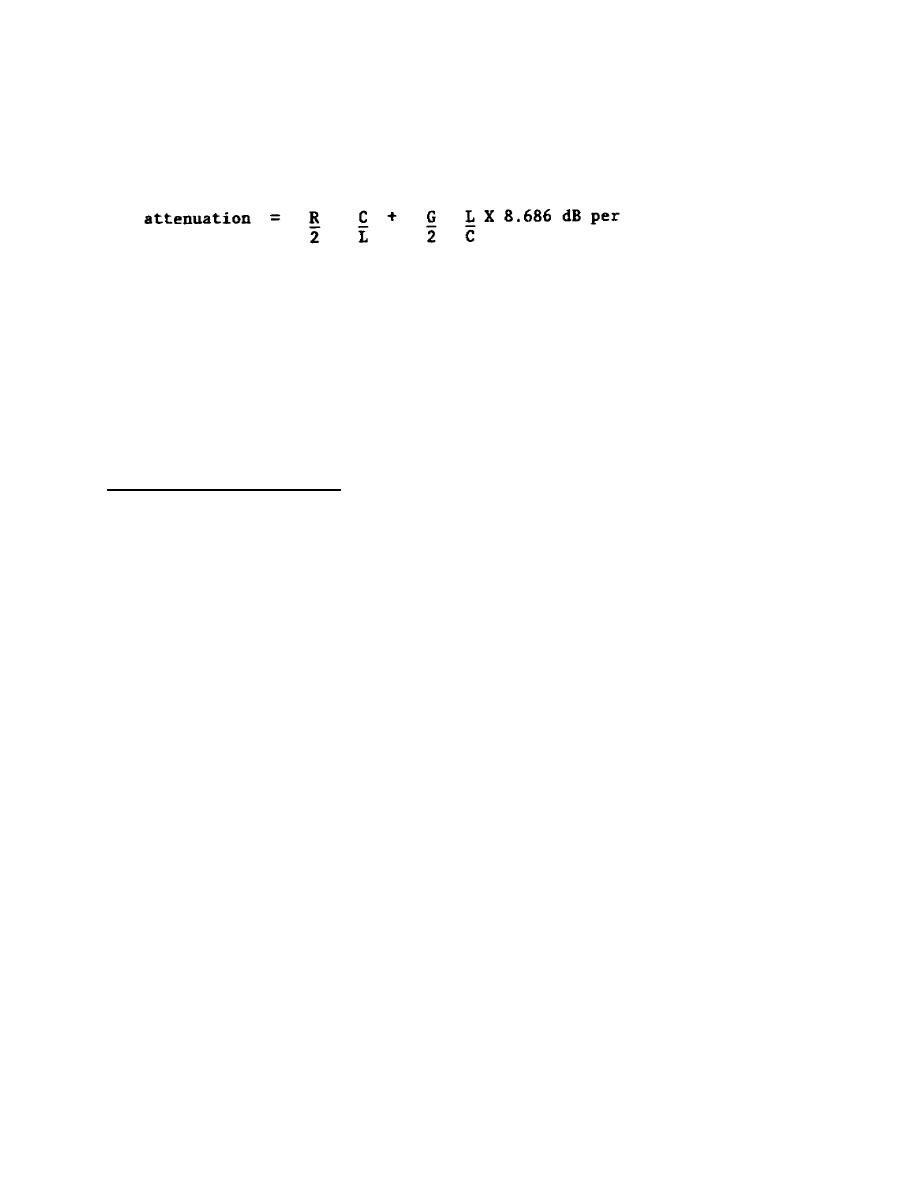
range, the insulation between wires, or between wires and ground, must be good, and the loading coils must be installed
carefully. For example, when the three field-wire lines listed in the table in paragraph 57d are loaded, as recommended,
with loading coil as shown in A, figure 61, the talking ranges of a single pair (wet) are increased from the values given in
the table to 19, 22, and 90 miles, respectively. The talking ranges of a single pair (dry) are increased to 35, 40, and 90
miles, respectively. The symbol used schematic diagrams to represent loading coils is shown in B
d. The formula:
loop mile, given in paragraph 61c is useful in showing how loading reduces attenuation. In this expression, the term R/2
C/L often is called the series loss, and the term G/2 L/C is called the shunt loss. On most lines, the series loss is many
times larger than the shunt loss. With this fact in mind, the effect on attenuation of increasing the inductance may be
examined. Practice confirms that increasing the series inductance decreases the series loss and increases the shunt loss.
However, as long as the latter is the much smaller loss, the over-all effect will be a reduction in attenuation. If the shunt
loss were not much smaller than the series loss, the inductance could not be increased much before the attenuation would
be increased by a further addition of inductance. This brings out the importance of good insulation in loaded lines.
Inductive loading in the presence of poor insulation actually may increase the attenuation over its nonloaded value.
Loading also gives a more uniform attenuation-versus-frequency characteristic over the useful frequency band and
therefore reduces distortion caused by nonuniformity.
63.
Interference on Transmission Lines.
Interference on telephone lines is a serious problem. It may be the result of lightning or other natural
disturbances of the atmosphere, or of artificial sources, such as power lines, railway communication facilities, or other
communication circuits. Interference from other communication circuits may result when several telephone lines are
operating in parallel with each other, and interference from power lines may result when telephone lines are run parallel to
power lines for considerable distances.
132



 Previous Page
Previous Page
